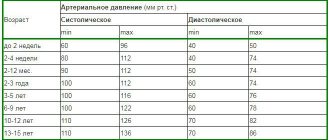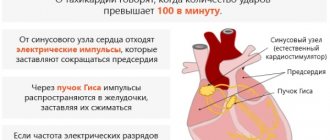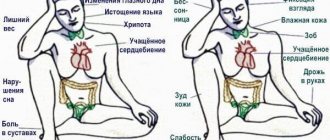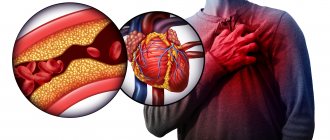The average heart rate when running and monitoring its norm is very serious. Any physical activity affects all systems, internal organs and muscle mass. Therefore, it is necessary to control your own condition and prevent it from worsening. In standard mode, the body functions adequately, but if a person loads himself with cardio training, he must monitor his heart rate. Their meaning provides a lot of information - with weak training there will be no noticeable effect, but with excessive training, disturbances in the functioning of all organs may appear. It is recommended to separate beginners and athletes - for different categories, heart rate and its maximum are different.
Who should monitor their heart rate?
Running is an impact on the body, the strength of which will only increase along with speed. Therefore, when you increase your pace, your body's consumption of important substances and oxygen from the blood increases. To speed up the delivery of these microelements, the heart muscle has to contract faster.
Your optimal life-time and maximum heart rate will change over the years. But age is not all that will really change the rate.
Will affect:
- gender – the normal heart rate when running for men will be slightly higher than for female peers;
- level of physical fitness - a beginner and an experienced runner will have different paces;
- bad habits - if a person smokes or likes to drink, the heart rate will quickly increase;
- stress and emotional distress - this can include any stressful situation, torment and problems that affect desire and strength;
- state of health - even a common runny nose can disrupt the rhythm, and colds and serious illnesses become a reason to weaken training or abandon it;
- weather - strong winds, drizzling rain or snow are worth postponing classes.
Those who are just starting out are advised to listen to themselves and avoid serious excesses of frequency. Normal heart rate during running remains within the normal range or slightly exceeds it. New athletes usually don't want to do this type of training, but it is the safest way to achieve results.
Beginners aren't the only group that needs to count their heartbeats. Even professionals who build a career in sports are counting. They regularly increase their loads, so it is important for them not to overexert themselves. If you do not calculate it, the risk of injury or provoking illness will become much higher.
Controlling the maximum actually permissible heart rate when running allows you not only to lose extra pounds, but also to get to know yourself better.
Introduction
Blood pressure (BP) measurement during clinical exercise testing (CST) is a necessary adjunct to electrocardiography (ECG) and heart rate (HR) assessment, as abnormal responses may reveal underlying pathology. Given the difficulty of measuring BP during exercise, accurate measurement techniques are required to ensure optimal clinical interpretation (1). Widely accepted contraindications to continued CST for safety include upper blood pressure limits (2,3). However, definitions of “normal” BP during exercise and a safe “upper limit” are based on a limited number of studies dating back to the early 1970s (4, 5). Since then, our knowledge of phenotypic variations and possible links to pathology of abnormal BP responses has evolved significantly. Despite this, BP responses in CST that exceed the recommended norms often pose a dilemma due to unclear clinical consequences, especially when other tests are normal. There is compelling evidence that excessive increases in systolic blood pressure (SBP) or diastolic blood pressure (DBP) during CST, called the hypertensive response (2, 3), are associated with a 36% increased risk of cardiovascular events and mortality (6), masked hypertension, despite clinically normal blood pressure (7), and an increased risk of latent hypertension in normotensive people (8 – 18). These observations highlight the potential clinical diagnostic and prognostic utility of exercise BP measurements, but they are not yet widely used in clinical practice due to limitations of previous studies (19), lack of standardized methodology, and limited empirical data in the general population.
The purpose of this review is to critically analyze the evidence contained in current guidelines for CST AD. We will show that the criteria used to define “normal” and “abnormal” responses are largely arbitrary and based on insufficient empirical data. We will also identify key factors influencing BP responses during exercise and how to increase their explanatory value in individual responses to CST. Finally, we will provide recommendations for future studies on exercise BP measurement to expand the evidence base and facilitate its adoption into clinical practice.
Peculiarities
Tension varies; it depends on the force with which the body is forced to move in the process. By increasing speed, the body increases its need to absorb the substances it needs and changes ongoing physiological processes.
The heart is capable of pumping blood at different speeds. When the stress on the artery walls increases during exercise, the heart rate increases.
If you run, your normal heart rate will be higher than if you sit on the couch, which is logical. This is in a completely healthy and trained person. For people who are overweight, have a fever or other problems, it is even higher. But for such categories, an adjusted plan for working on oneself must be created separately.
Who should I turn to for help with organizing the training process?
Without deep knowledge of the organization and functioning of the body, it is difficult to organize a training regimen in the right way on your own. A fitness instructor handles this mission. If you decide not to go to the gym, but to run on your own, a sports doctor will come to the rescue.
A sports doctor is a specialist who understands a healthy lifestyle and proper methods of losing weight. He will determine the state of the body, allow you to train and decide which sports you have a genetic and phenotypic predisposition to. The doctor will adjust the dynamics of the loads according to the functional capabilities and select the optimal exercises for developing endurance (a set of pedagogical, medical-biological, psychological and pharmacological techniques). A sports doctor also treats occupational injuries and illnesses.
Another highly specialized specialist in sports medicine is a rehabilitation specialist or exercise therapy doctor. Helps restore the functions of the musculoskeletal system by selecting the optimal complex of physical therapy.
Changes with increased heart rate
When jogging, it is 120-130 beats per minute. This is the most suitable atmosphere, it makes it easier to absorb oxygen from the blood. This has little effect on changes in the body - no weight is lost and no mass is gained. But you won’t be able to get exhausted in the process either.
From the useful:
- Heart training. With the help of such activities, you can improve blood supply to the whole body, stabilize the nervous system, and prevent diseases.
- Memory abilities and reaction speed become better.
- Fat burning level. This running heart rate is the level that is perceived as a signal to use fats instead of carbohydrates for energy. The main rule is to run for at least 20 minutes.
- Health improvement. In addition, stress and anxiety levels decrease.
Higher - from 130 to 145 beats per minute. This is what athletes usually do before going to the main part of the training. This is no longer a health jog, but it’s not yet a training run either. It is advisable to maintain a similar rhythm for at least a couple of minutes, then the body will prepare for more drastic exercises.
What heart rate should be while running - the norm for any future champion varies. A steadily training person has 140 at an increased pace of movement and average speed. Heart rate is a rather individual indicator. Where the beginner is out of breath and unable to continue, the experienced runner is not even tired yet. Age should also be taken into account. If at 55 years old the race causes 140, then at 20 years it is usually no more than 120.
A frequency of up to 165 is considered a training frequency, but this is usually used by athletes who develop endurance. Changes occur in the body that fitness enthusiasts use in the short term to lose fat. You can't run like this for a long time.
When training for acceleration, you need to alternate between the fastest movement at values of 175-180 and slow movement. This beating speed can be harmful if you practice on your own. Acceleration to such body capabilities is allowed only under the supervision of an experienced mentor.
Excessive blood pressure response to CST
In addition to establishing an upper BP threshold for exercise cessation, the AHA established an excessive BP response to exercise >210 mmHg. Art. for men and >190 mm Hg. Art. for women, as well as an increase in DBP >10 mm Hg. Art. compared to the resting value or above the value of 90 mmHg. Art., regardless of gender (3). Validation of the systolic criterion appears to be based on data described in a review (52), whereas the criteria for abnormal DBP response arose from a series of studies predicting an increase in resting DBP (53). ACSM currently defines excessively elevated BP as an absolute SBP >250 mmHg. Art. or relative increase >140 mm Hg. Art. (2), however, the source of these values is unknown and the criteria have changed over time. For example, the AHA confirmed the clinical need for excessive BP values but refrained from proposing threshold values (54), whereas previous ACSM recommendations cited systolic and DBP >225 and >90 mmHg as response criteria. Art., respectively (55).
Many studies linking exaggerated BP responses to exercise with latent hypertension have not used recommended thresholds but have used arbitrary thresholds (8, 14, 15, 53, 56 – 59), values >90th or 95th percentile (11 – 59). 13) or the values of people from the top tertile (10, 60). Figure 4 provides a summary of BP thresholds used in previous hypertension-related studies of individuals with excessive BP. To date, the lowest threshold has been established by Jae et al (17) - 181 mmHg. Art. – as the most selective SBP threshold for predicting hypertension in men during a five-year follow-up. Several studies have used magnitude of change rather than absolute value to define excessive BP. Matthews et al (9) used a change in SBP >60 mmHg. Art. at 6.3 MET or >70 mm Hg. Art. at 8.1 MET; Lima et al (61) used an increase in SBP >7.5 mmHg. st./MET. For DBP, several studies have used increases >10 mmHg. Art. (9, 53, 56) or 15 mm Hg. Art. (61) with CST. Not surprisingly, the lack of consensus on the definition of excessive BP has led to discrepancies in incidence estimates ranging from 1 to 61% (59, 62).
Rice. 4. Generalized thresholds for systolic blood pressure (SBP; a) and diastolic blood pressure (DBP; b), which are used to identify excessive blood pressure responses.
Dashed lines are sex-specific thresholds recommended by the American Heart Association (AHA) (3) and the American College of Sports Medicine (ACSM) (2). Source studies are listed at the bottom of each column.
Most studies assessing excessive BP during exercise have included a narrow age group of men (middle-aged), which limits the applicability of the results to all people. A single study of young adults (25 ± 10 years), involving 76–77% of competitive male athletes, concluded that exercise BP was the best predictor of future BP (53). Several studies have assessed men and women, and similar thresholds have been applied to both sexes (8, 13, 59). Only one study examined age- and sex-specific criteria for excessive BP based on values above the age/sex 95th percentile (12). The values used were obtained from the second stage of the Bruce protocol, for both sexes, only excessive BP was associated with an increased risk of hypertension.
In addition to emphasizing the importance of DBP in predicting future events, this study poses two key questions: is the best criterion for BP, and how to obtain BP values during exercise? Limited evidence suggests that the excessive increase in blood pressure seen early in CST may be more clinically significant. Holmqvist et al (16) observed people who reached their maximum BP late in the CST without having the same risk of hypertension as people who reached that BP early in the test. To date, studies have performed manual auscultation with various sphygmomanometers or used automatic oscillometric devices. Auscultation is complicated by motion artifacts and ambient noise, and oscillometric devices assessed DBP through measurement of mean arterial pressure (63). In all cases, numerous errors and assumptions are possible, including the validity and reliability of data from each device, which are typically obtained in a homogeneous population and are not valid in others (64), and the use of DBP estimates to attribute risk.
Although there is sufficient evidence to support the association between exaggerated BP responses to exercise and the risk of latent hypertension, more rigorous methodology for identifying “abnormal” responses is required for additional factors of age, sex, fitness and comorbidities, particularly the use of a single value at peak exercise. The rate of change in BP, plotted as the slope of the curve in Figure 5, provides the most reliable approach to classifying individuals as normal or overresponsive. However, the hypertensive response to exercise will help uncover pathologies (eg, coarctation of the aorta), improve risk stratification, increase the sensitivity of exercise imaging studies, and improve the identification of strategies in cases of borderline hypertension.
Rice. 5. Changes in systolic blood pressure (SBP) relative to metabolic equivalent (MET) - shown as different colored lines for three hypothetical respondents.
Dashed lines indicate sex-specific thresholds recommended by the American Heart Association (AHA) (3) and the American College of Sports Medicine (ACSM) (2). Red and green reactions are stopped at similar levels determined by the AHA. However, the theoretical response shown in green appears to be more clinically significant. Likewise, although the red and blue lines reach similar MET (training) levels, there are clear differences in response patterns.
How to determine the norm when running
The meaning of this indicator is purely personal for everyone. It can be installed at a level where it is comfortable to walk the distance without deteriorating his well-being. It is also important to take into account physical fitness. To find out how many beats per minute will be normal for a particular athlete, you need to purchase a heart rate monitor.
This is especially convenient if the runner wants to get a certain load or strive to achieve a goal. If you just need to lose excess weight, then running long runs with a running heart rate that does not exceed 130 per minute is suitable.
It is important to purchase not only a heart rate monitor, but also special clothing in which you will be practical and comfortable to move. An unsuitable or low-quality sports suit does not allow air to pass well to the skin, causing excessive sweating. It's stuffy, sweat constantly flows through the body, it doesn't stretch well and presses.
Even for amateur training, it’s worth choosing a set that you like – bright, convenient and comfortable. These include things from Stayer:
- Practical. Non-staining and without unnecessary elements.
- Bright. Stylish and noticeable.
- Comfortable. The main quality of clothing is comfort when moving.
- Price. For high quality and design – low.
Correctly sized sneakers, clothes that make it pleasant to work out in, a heart rate monitor and desire. This is enough to achieve any results.
There are 3 running categories:
| Beats per minute | Duration, min | Note | |
| jogging | 130-150 | 20-40 | Harmless, you can do it yourself |
| Middle distances | 150-170 | 10-20 | It is better to consult a specialist and monitor changes in your condition. |
| Acceleration | 170-190 | 5-10 | Only under the supervision of a trainer |
This is average data. To identify your own indicators, you need to use a formula and control possible changes.
For young people, the maximum allowable formula will be:
220 –x (for the stronger sex);
196 – x (for women), where
X – number of years.
What is the normal heart rate for a 28 year old man when running: 220-28=192 beats per minute. It is not worth allowing an increase even more; this is fraught with the appearance of serious negative changes, especially if it is maintained for a long time.
“Only the heart of a sick person beats like a clock” James Mackenzie, 2010. “With the help of the pulse one can recognize the existence of a disease in the body and foresee future ones.” Herophilus of Chalcedon, c. 335 BC In my opinion, every parent should be able to count the pulse (the number of heart beats in 1 minute). This can be done by pressing large vessels, usually with the index, middle, and sometimes ring fingers. The pulse can be examined in the shoulder, femur, popliteal region, on the back of the foot, and on the temples. But it is most convenient on the radial artery - on the lateral side of the wrist.
In emergency situations, carotid pulse examination is often used: on the carotid artery, located in the neck, below the hyoid bone and outward from the thyroid cartilage (see picture).
With this measurement method, the artery should be gently palpated while the person being examined is sitting or lying down. Excessive compression of the carotid arteries can lead to fainting or cerebral ischemia. You cannot palpate both carotid arteries at the same time! You can learn to count your heart rate through a phonendoscope, but in this case you will most likely need to consult a specialist, since two tones are heard and you need to distinguish which one is the first, according to which the heart rate itself is calculated. The number of vascular oscillations is calculated in 15 seconds and multiplied by 4, or in 10 seconds and multiplied by 6. So, we will assume that you already know how to count your baby’s pulse. Increased heart rate (tachycardia). Due to the elasticity of the chest and the thin subcutaneous fat layer in a child, even with a slight increase in heart rate, you can see vibration of the anterior chest wall, synchronous with the contraction of the heart, which sometimes frightens parents. A growing body requires intense metabolism and a high need for oxygen. Therefore, the younger the child, the higher his heart rate. Everyone knows this. But where is the limit, exceeding which is no longer the norm? This is an important question that causes concern among many parents. Heart rate norms at rest and after exercise are different. The stress for an infant is feeding, crying, and physical activity. For older people – walking, running, strong emotions (both positive and negative).
Heart rate norms in children at rest.
Table N1 shows the percentile distribution of heart rate by age - from 25‰ to 75‰ - this is the norm. From 75‰ to 98‰ – tachycardia, above 98‰ – severe tachycardia, which, as a rule, is always pathological. Heart rate after exercise is determined by the formula: (220-age) x 0.85. For example, for a 3-year-old child this is (220-3)x0.85 = 184 beats per minute (for comparison, up to 137 is allowed at rest). For the most meticulous parents: if you have calculated and received a figure that exceeds the specified standards by 1-5 strokes, do not worry. In addition, you could have made a mistake; it makes sense to measure several times. All standards are average values and a small deviation is quite acceptable. In addition to the number you received when calculating the pulse, the general condition of the child must be taken into account: if he is active, cheerful, with a normal skin color, there is most likely no reason for concern. In addition to the pulse rate, many parents pay attention to its rhythm. An irregular pulse in a child associated with breathing is normal. If you can ask your baby to hold his breath for a while, the pulse immediately becomes more rhythmic.
NB! If the pulse significantly (by 10-20 or more beats) exceeds the norm, if its irregularity is not associated with breathing, the child is pale, lethargic, the nasolabial triangle is gray, shortness of breath is a reason to consult a doctor. Registration of a pathologically rapid pulse is not necessarily associated with problems of the cardiovascular system, but also with pathology of other internal organs, especially the gastrointestinal tract and endocrine system. In routine practice, most often, this is the debut of some acute infectious disease that has not yet manifested itself. Decrease in heart rate (bradycardia). As a practicing pediatrician and cardiologist, I can say that over the past 10 years the number of children with a pulse lower than average has increased significantly. There is no evidence base for this phenomenon in the medical literature available to me, so I can only assume that this may be the result of widespread physical inactivity and a passion for gadgets, which we will talk about in a separate conversation. If a rare pulse is detected, this is a reason to contact a pediatric cardiologist. But don’t be surprised if the doctor, instead of the treatment you expected, advises you to move more, stay outdoors and control this situation.? Sometimes medications are prescribed, but their effectiveness has not been proven. Considering that with age the pulse should physiologically become less frequent, a child with bradycardia may experience a pathological decrease in pulse rate, which should not be missed.
Children with a low pulse often experience headaches, dizziness, increased fatigue, and poor tolerance to physical activity. The boundaries of moderate and severe bradycardia are presented in Table N2. NB! : Fainting (syncope) or presyncope (presyncope) is a reason to immediately seek medical help. Most of these situations, especially in adolescence, are not dangerous, but there are a number of pathological conditions that require immediate treatment.
Table N2. Interpretation of changes in heart rate (beats/min) in children 5-18 years old (protocol TsSSSA FMBA of Russia) A few words about the modern capabilities of instrumental pulse recording: 1. The standard ECG, known to everyone, is limited to 30-40 seconds of recording, but due to the simplicity and accessibility is indispensable in this matter. 2. Daily (Holter) monitoring (HM) ECG provides information about each heartbeat during the day, its variability during sleep and wakefulness, stress and rest. At the same time, an observation diary is kept and, if it is sufficiently informative, it is possible to prove or reject the connection of complaints with changes in the ECG. This is the “gold standard” for diagnosing heart rhythm and conduction disorders at any age, starting from birth. It is very important to know that the norms determined at rest differ significantly from the norms for daily monitoring, since a larger range of changes is allowed per day. I will not cite them, since they are the domain of specialists. 3. External monitors, so-called Event recorders, can be attached to the surface of the body for 7 to 28 days, and to register an ECG it is necessary to press a button when there are symptoms. 4. Reveal - a device implanted under the skin, resembling a flash drive - is used if there are threatening symptoms, but nothing can be registered on the HM ECG. Such a device can remain under the skin for up to two years.
When recording a rare pulse on an ECG, it is useful to conduct a test with physical activity, when the ECG is recorded at rest (lying down), after a load of 30 squats for 20 seconds) and 3 minutes after the load. A simple but very informative test: if the pulse increases adequately to the load, is restored in a timely manner and there are no pathological changes on the ECG, then, as a rule, there is no cause for concern. The load test can also be carried out using special devices - treadmill test, bicycle ergometer, etc.
The article was prepared by medical cardiologist N.N. Konopko.
Jogging at the usual level
For professionals and simply physically developed people who regularly engage in such exercises, this is normal.
When the rate exceeds the normal level, the runner temporarily returns to a walk, waits for the heart rate to decrease, then accelerates again. Usually he moves at this rhythm for half an hour.
It is important to observe your own breathing. Each inhalation and exhalation is usually deep and unhurried, the duration of each repeats the previous one. This makes it easier to recover and not stop.
If you try to run, despite your heart jumping out of your chest, then instead of a quality workout you will only get harm.
When fat is burned
Any running will provoke energy expenditure. With a normal or reduced heart rate, they are considered most effective. But with such loads, the duration of the race is of great importance. Only after half an hour the body stops using carbohydrates for breakdown and begins to use its own fat deposits. Therefore, an hour-long run becomes as useful as possible.
Beginners and untrained sports enthusiasts should start with a short jog. When the body gets used to it, you can move on to races with short transitions to intense running.
When this rhythm becomes familiar, add small sharp transitions to acceleration in easy mode. Another effective way to get fit is to move on rough terrain. Climbing up and down hills has a great effect on the cardiovascular system. If you follow these tips, you will lose much more fat from your waist.
How to increase endurance?
Reduce heart rate when running by regular training with a gradual increase in loads to the most effective, but not exceeding the permissible harmless threshold.
For an untrained person, it is better to start with light loads. The heart rate in such cases should be within 40% of the maximum (at 30 years old, the normal heart rate when running is considered to be 76 beats per minute). For some, walking at a calm pace is enough to achieve this level. The main thing is to be patient and not to overdo it, otherwise it will be difficult for your heart to work under excessive stress, and you will soon feel chest pain, shortness of breath and severe weakness.
The heart rate during physical activity at the next stage of endurance training should not exceed 50%. A month of frequent training (5 times a week) lasting about 30 minutes is enough. Then the level gradually increases. Now they plan activities that keep the heart rate ranging from 50-65% to 80% of maximum. As before, increase the load little by little (faster running pace, exercise bike, elliptical trainer - choose to taste). The lungs and cardiovascular system work more intensely, and blood flow improves significantly. An athletic heart develops. Bradycardia gradually develops. As a result, all these changes significantly increase endurance to physical activity. In this zone, reserves of fat cells are burned.
In the future, each workout consists of a warm-up, aerobic and anaerobic zone.
There are techniques for increasing endurance for runners. The most banal and simplest way is to gradually increase the distance and increase the heart rate.
Optimal heart rate when running
The normal heart rate at which you should engage in this sport is 115-130 beats per minute. It stimulates blood circulation, accustoms you to exercise, breaks down and removes lactic acid, restores physical and psychological health, removes fat and gives the body an athletic shape.
The main thing is not to allow an increase to 220 or higher. This value becomes critical - blood pressure rises, all systems begin to work in emergency mode, and this is dangerous.
For women
Girls quite often use this sport to keep themselves in good physical shape. In addition, it stabilizes the psychological state and improves mood.
The norm is from 118 to 137 beats per minute. If you measure your pulse before, during and after exercise, you can determine the level of harmless stress for the body.
Beginners often encounter:
- shortness of breath;
- tingling in the side;
- lack of breathing;
- increase in pressure.
If the normal heart rate does not exceed 80, and immediately after the race – 140, then the run is considered too intense or long. Next time you should reconsider and reduce the speed or duration.
For men
Frequent exercise will make him more resilient and active. You can choose the type - long and leisurely or medium distance, but in accelerated mode. It is important that the activities are enjoyable. Trying to run against your will will quickly end and will not bring the desired effect.
The norm for men is from 115 to 135 beats per minute.
If you exercise regularly, the functioning of the cardiovascular and excretory systems will be normalized, sleep and appetite will improve. A brain saturated with oxygen will work more actively, endorphins are produced - hormones of happiness.
Basic principles of dosing and control of physical activity during physical education
Excess body weight, decreased physical performance, smoking, excessive alcohol consumption - all this contributes to the occurrence of cardiovascular and many other diseases. Despite the powerful development of drug therapy, dosed physical activity remains a universal method for the prevention of coronary heart disease, arterial hypertension, obesity and other diseases. Recently, there has been a certain increase in the population's interest in regular physical education.
People who want to receive practical recommendations on building, planning and controlling loads during physical education seek medical advice. The doctor should recommend a certain regimen of physical activity that corresponds to the level of fitness of the body, taking into account the existing chronic pathology.
We present to your attention information material that reveals the main goals, objectives and principles of physical training.
- Physical health assessment
If your client is under 35 years of age and has no signs of any illness, then there is generally no need for him to consult a doctor before starting regular physical activity. But if he is over 35 years old, and he has not been involved in sports or physical activity over the past few years, then a medical examination is necessary, especially if the following health abnormalities occur:
- high blood pressure;
- a history of heart attacks;
- presence in the family history of indications of the early development of cardiac pathology or deaths from cardiovascular diseases;
- frequent attacks of headaches or dizziness;
- significant degree of shortness of breath with little physical exertion;
- arthritis and various pathologies of the musculoskeletal system;
- other possible chronic diseases.
Physical activity is practically safe for people with an initially good level of physical health, who have undergone a full medical examination and received adequate medical recommendations.
- Basic concepts of physical health
Physical fitness can be characterized as the body’s ability to comfortably endure everyday physical activity and successfully cope with suddenly occurring stressful situations. The individual level of physical performance is influenced by factors such as age, gender, heredity, bad habits, and nutritional patterns. The concept of physical health, or fitness of the body, includes several components.
Fitness of the cardiovascular and respiratory systems (cardiorespiratory endurance)
- a component of the general fitness of the body, reflecting the ability of these systems to adequately ensure the vital functions of the body during physical activity of varying intensity and duration. In practice, this indicator can be assessed taking into account a person’s ability to withstand prolonged physical activity, such as running, swimming, skiing, etc.
Muscular strength
- the ability of muscles to perform the maximum possible mechanical work in a short time. In practice, this component of the body’s fitness is assessed, for example, for the upper limb belt, by the maximum amount of weight lifted.
Muscular endurance
- the ability of muscles to perform mechanical work of varying duration and frequency. For example, repeated lifting of a certain weight is used to determine muscular endurance of the upper shoulder girdle.
Flexibility
- the ability to perform mechanical work using the maximum possible range of motion. Seated trunk flexion is a simple and objective method for assessing the flexibility of the lumbar spine and lower extremities.
Body composition
- the ratio between body fat and the total mass of skeletal muscle, bone tissue and internal organs. Individually selected physical exercises help reduce fat mass and increase muscle mass in certain areas of the body.
- Structure of training sessions
The duration and number of workouts per week, as well as the intensity of physical activity, are determined by the level of fitness of the body, age, the presence or absence of any chronic diseases, as well as the social needs of the person.
Any individual training program should include exercises aimed at the harmonious development of all the main components of physical health. Any training session should consist of a warm-up (warmup), main load and cool-down (cooldown).
Below is the structure of a training session, designed for the average healthy person and aimed at maintaining a minimum level of physical health of the body. It includes the most popular types of training exercises.
Warm-up lasts five to ten minutes and includes low-intensity physical activity (walking, slow running, flexibility exercises, rotational and swinging movements of the upper and lower extremities). It is aimed at preparing the cardiovascular, respiratory and musculoskeletal systems for the main training load. Below are the main types of core training load.
Training to develop muscle strength (muscular strength) is carried out at least twice a week for 20 minutes. The most effective way to develop muscle strength is to lift weights.
Training to develop muscular endurance should be carried out at least three times a week for 30 minutes and include exercises for the main muscle groups: rhythmic and plastic exercises, push-ups, squats, pull-ups, repeated weight lifting.
Training to develop fitness of the cardiovascular and respiratory systems (cardiorespiratory endurance) is carried out three times a week for 20 minutes and includes prolonged physical activity performed in an aerobic mode. The most common types of such exercise are fast walking, running, cycling, rowing, skiing, as well as team sports (basketball, handball, etc.).
Flexibility training should be done daily during the warm-up or cool-down and include flexibility and stretching exercises. A cooldown involves low-intensity activity (such as walking or running at a slow pace) and five to ten minutes of flexibility exercises.
- Basic principles of fitness
Specificity
- the need to select a certain set of physical exercises aimed at developing and strengthening muscle groups that are most involved in a certain type of muscle activity. It is advisable to combine different types of physical activity (swimming, running, walking, skiing, etc.) for more harmonious development of the body, as well as for the prevention of injuries.
Physical activity must be of sufficient intensity and duration to ensure growth or maintenance of the body's optimal level of fitness.
Regularity of physical activity.
Training sessions should be regular. A minimum of three training sessions per week is required to maintain optimal fitness levels.
Progression.
A gradual increase in the intensity, duration and/or frequency of training sessions is a necessary condition for optimally increasing the body's fitness level.
- Exercise intensity and heart rate control
Physical activity comes in varying intensity and duration. Four main zones of physical activity intensity have been identified (see Fig. 1), each of which corresponds to a certain level of bioenergetic processes and a range of heart rate (HR):
1.
Low-intensity physical activity with a heart rate less than 75% of its maximum value (HR max.);
2.
Physical activity of a maintenance nature with a heart rate from 75 to 85% of the maximum heart rate, carried out in an aerobic energy supply mode;
3.
Physical activity of a developmental nature with a heart rate from 85 to 95% of the maximum heart rate.
and transitional aerobic-anaerobic energy supply regime; 4.
Physical activity of submaximal and maximum intensity with a heart rate of more than 95% of the maximum heart rate. and anaerobic energy supply.
Each person has his own individual boundaries of load intensity zones. To more accurately determine these boundaries for the purpose of subsequent monitoring of sports loads, special testing is used. It is based on a test load that increases stepwise to the maximum possible (“work to failure”) level.
Such testing is contraindicated for untrained and poorly prepared people. To determine intensity zones in this case, a simpler calculation method is used. You can easily calculate the boundaries of each intensity zone, knowing the age value of heart rate max., which is determined by the formula 220 minus age.
For health purposes, as a rule, physical activity is recommended within intensity zones I and II. Loads of greater intensity are a privilege of sport and require a fairly high level of preparedness.
Studies have shown that exercise with an intensity of 60-70% of heart rate max. is most effective for burning fat, so it is used to correct excess body weight:
| Target zone | |
| Age (years) | Heart rate (bpm) |
| 20 | 120-140 |
| 30 | 114-133 |
| 40 | 108-126 |
| 50 | 102-119 |
| 60 | 96-112 |
To increase the fitness of the cardiovascular system, a load with an intensity of 60-80% of max heart rate is used:
- Monitoring heart rate during training sessions and during rehabilitation programs
Heart rate monitoring is a universal method of monitoring and regulating the intensity of physical activity. Heart rate monitoring is a prerequisite for the safe and dosed use of physical activity in a certain group of people: the elderly; suffering from cardiovascular pathology; undergoing rehabilitation after myocardial infarction and other serious illnesses.
| Target zone | |
| Age (years) | Heart rate (bpm) |
| 20 | 120-160 |
| 30 | 114-152 |
| 40 | 108-144 |
| 50 | 102-136 |
| 60 | 96-128 |
Recently, heart rate monitors, which continuously record heart rate, are most often used for this purpose. The operating principle of heart rate monitors is similar to recording the electrical biopotentials of the heart on the surface of the chest, used when recording an ECG. The heart rate monitor consists of two parts: a chest belt with electrodes and an ECG signal transmitter, and the heart rate monitor itself or receiver, which looks like a wristwatch. The transmission of signals from the chest transmitter to the heart rate monitor is carried out telemetrically. There are several models of heart rate monitors, differing in the range of special functions. Mandatory for all monitors is continuous recording of the heart rate value, as well as audio and visual alarms when the heart rate goes beyond the boundaries of a preset target heart rate zone. These functions are necessary for dosing the intensity and duration of physical activity, when strict adherence to the pulse regime is necessary.
The information provided to your attention reveals only the basic principles of planning and controlling loads during physical education. We hope that the proposed material will help you in your practical medical activities.
How to calculate your heart rate correctly
It is best to consult a specialist and undergo an examination before starting cardio training. This will help identify possible diseases and disorders in the functioning of the heart muscle. But usually the desire to start putting the body in order comes spontaneously, and no one goes to the clinic.
In this case, it is better not to overload yourself and increase the load gradually. There are safe areas to practice based on age, gender, and a variety of other factors. The average among non-professionals is from 60 to 100 beats per minute. For athletes, these are different data - from 37 to 60.
To calculate it, you can use two methods:
- count by yourself by placing your hand on your wrist;
- use a heart rate monitor.
Limit standards
You need to monitor your condition. As soon as you no longer have enough oxygen or chest pain appears, you should slow down or stop. You can't continue through pain. It is also not recommended to exceed the maximum allowable heart rate.
For a young man of 19 years old, the maximum will be 201 beats per minute. This is a limit that cannot be crossed without harm to oneself. But this is not just a limitation that is important to consider. This is a load that an unprepared person cannot withstand. It will be different for each age.
Acceptable limits:
| Age, years | Quantity per minute |
| 18 | 202 |
| 19 | 201 |
| 20 | 200 |
| 21 | 199 |
| 22 | 198 |
| 23 | 197 |
| 24 | 196 |
| 25 | 195 |
| 26 | 194 |
| 27 | 193 |
| 28 | 192 |
| 29 | 191 |
| 30 | 190 |
The ideal is to give 70% of the limit. The result will be an intense, but not critical load. Perfectly helps in the fight against excess weight.
Pulse rate:
Let's take the average data:
| Years | Heart rate |
| 20-29 | 140 |
| 30-34 | 135-137 |
| 35-40 | 130-135 |
| 41-45 | 126-130 |
| 46-50 | 120-126 |
This heart rate during exercise will optimally influence weight loss and improve physical fitness without harm to the body.
5 heart rate zones:
It is also worth noting the percentage relationship between the type of training and the desired effect.
| Zone | Load, from maximum | Heaviness | Note |
| Restorative | 50-75% | Very easy | Restores the body, improves health and fitness |
| Aerobic | 70-85% | Just | Improves endurance, begins to burn fat deposits |
| Threshold | 85-90% | Moderately | Improving the body, abilities, increasing heart volume |
| Anaerobic | 90-95% | Hard | Increases strength and muscle mass |
| Maximum heart rate | 95-100% | Maximum opportunity, danger | Limit of development, level of competition and reaching the maximum |
It is important to exercise regularly, regardless of the chosen mode. Then the result will be noticeable.
Tachycardia
Thyrotoxicosis
Iron deficiency
Climax
Menopause
16566 12 February
IMPORTANT!
The information in this section cannot be used for self-diagnosis and self-treatment.
In case of pain or other exacerbation of the disease, diagnostic tests should be prescribed only by the attending physician. To make a diagnosis and properly prescribe treatment, you should contact your doctor. Tachycardia: causes of occurrence, in what diseases it occurs, diagnosis and treatment methods.
Definition
Tachycardia is a condition in which the heart rate is more than 100 beats per minute. Tachycardia is not an independent disease, but is a symptom (manifestation) of certain diseases. In addition to rapid heartbeat, this condition is characterized by shortness of breath, weakness, chest pain, and sometimes loss of consciousness.
If shortness of breath and chest pain worsens, you should immediately seek medical help.
Types of tachycardia
One of the classifications divides tachycardia into physiological and pathological.
Physiological tachycardia is characterized by the absence of damage to the heart muscle and cardiac pathways. This type of tachycardia can be called compensatory, since it develops in response to an increase in the body’s need for oxygen, for example, during sports, psycho-emotional stress, being at high altitudes, etc.
Physiological tachycardia is characterized by the following manifestations:
- changes in heart rate are transient (not permanent);
- there is an obvious connection with a provoking factor (stress, severe anxiety, physical activity);
- upon completion of the action of the provoking factor, the heart rate gradually returns to normal;
- there are no pathologies from the cardiovascular system (for example, congenital heart defects, previous heart attacks, damage to the heart valve apparatus and other heart rhythm disorders).
Pathological tachycardia is observed in the following diseases and conditions:
- Hyperfunction of the thyroid gland (hyperthyroidism, thyrotoxicosis, diffuse toxic goiter).
- Diseases of the adrenal glands with their hyperfunction and, as a result, increased release of adrenaline into the blood.
- Damage to the conduction pathways of the heart due to a heart attack, congenital pathology of the heart valve apparatus.
- Presence of anemia (decreased blood hemoglobin level).
- Damages of the heart muscle (for example, myocarditis, pericarditis).
- Hormonal changes in the body (pregnancy, menopause).
Possible causes of tachycardia
Tachycardia with
hyperfunction of the thyroid gland
is more often observed in women than in men. An increase in thyroid hormone levels is reflected in the sinus node, which is located in the right atrium. It generates electrical impulses that cause myocardial contractions. When hormone levels are high, they reproduce chaotically, affecting the heart. As a result, the heart rate increases and tachycardia occurs.
Adrenal cortex dysfunction, or Addison's disease
, in which the adrenal glands cannot produce enough hormones. Their deficiency leads to the fact that the kidneys begin to quickly excrete sodium and water in the urine, dehydration of the body occurs, the water-electrolyte balance is disturbed, the blood thickens, circulation and blood supply to peripheral tissues slow down. Against the background of these changes, pathological changes in the cardiovascular system occur.
For anemia
the increase in the number of heart contractions is due to the need to maintain the required level of oxygen in the blood in conditions of hemoglobin deficiency.
Let us recall that hemoglobin is a carrier of oxygen to tissues and is found in red blood cells.
When hemoglobin levels decrease, an increase in heart rate allows blood and oxygen to be “driven” to the tissues faster, which makes it possible to partially maintain the required level of oxygenation. There are several types of anemia, including those associated with bone marrow pathology (for example, aplastic anemia, leukemia), with a lack of microelements (iron deficiency, B12 and folate deficiency anemia), anemia due to blood loss (chronic and acute).
If you suspect the development of anemia due to acute blood loss, you should immediately seek medical help.
Tachycardia
in pregnant women is caused by both an increase in the need of the mother and fetus for oxygen, and an increase in the consumption of serum iron, folate, and cyanocobalamin.
Tachycardia may develop while taking certain medications
, drinking
coffee
and
caffeine-containing products
, energy drinks containing
taurine, smoking
.
Which doctors should I contact?
If you suspect a pathology of the thyroid gland or adrenal glands, you should contact an endocrinologist. To treat conditions associated with cardiac dysfunction, see a cardiologist. If you have anemia, see a therapist or hematologist. Pregnant women are observed in the antenatal clinic, where an obstetrician-gynecologist can promptly identify the pathology and prescribe treatment.
Diagnosis and examinations for tachycardia
When a patient presents with symptoms characteristic of tachycardia, it is necessary to find out whether the tachycardia is the root cause of the deterioration in well-being that prompted the patient to see a doctor, or whether it is secondary and there is an underlying disease.
If there is a suspicion of thyroid pathology, the level of thyroid hormones in the blood (T3 - triiodothyronine, T4 - thyroxine and their free fractions) and the level of thyroid-stimulating hormone are determined.
Indicators before, during and after
The norm at rest for people who have not previously engaged in sports, the optimal frequency varies from 60 to 100. It should be measured separately from any activity - sitting on the couch, watching TV or other activity that does not require activity.
It is important to remember that if one morning your heart rate is higher than usual, then you need to stop training for a day.
During movement, the rhythm of contractions depends on the intensity and duration of the race, physical data and other factors that we have already discussed above. There is no need to exceed the limits, especially without the supervision of a trainer.
After running, your pulse should return to normal gradually, but quite quickly. Even after a light jog, you should not stop; you should walk quickly and then at a slow pace.
What should the heartbeat be like and how does it recover after exercise?
The pulse is measured several times: at rest, immediately after a run, during 1.5 minutes of recovery.
At rest, a healthy adult's heart rate is 60-90 beats per minute . Scientists have proven that a resting heart rate of 48-60 beats/min is considered excellent; 60-74 beats/min. - good; 74-89 beats/min. – satisfactory; and more than 90 beats/min. – unsatisfactory.
In women, this indicator is usually a little more labile.
An important parameter of the cardiovascular system is the time it takes for the heart rate to return to its original value. It is considered normal to reduce the value in the first minute by 20%, in the third – 30%, up to 10 minutes. – 50-75% of post-load. If it is slow, they think about excessive stress or illness.
A rapid increase in heart rate to maximum numbers also indicates a high load. And vice versa - the absence of increased heart rate with sufficient provocation indicates both fitness and conduction pathology in the heart.
The pulse should be the same in both arms. If it is different, pathologies of the peripheral vessels and aorta are possible. Normally, the heartbeat is rhythmic, which makes contractions regular. Physical activity provokes the appearance of arrhythmia.
Another marker of arrhythmia is pulse deficiency. A deviation of this parameter from the norm means that the heart contracts ineffectively and blood is not ejected in the appropriate volume. The person feels pronounced tachycardia, and the pulse in the artery is much less frequent. This is especially true for older people, who most often have organic diseases.
A pathological sign is the appearance of the following symptoms:
- dizziness, lightheadedness, loss of consciousness;
- visual impairment;
- severe shortness of breath;
- bluish skin;
- chest pain.
Such manifestations indicate either excessive physical exertion or disruption of the heart and cerebral blood flow. In this case, just relax. If complaints do not go away, be sure to seek medical help.
In adolescents, vegetative-vascular dystonia (VSD) is sometimes observed, which provokes various manifestations during running. But with a rational selection of the load, sports help strengthen the vascular wall, improve blood flow, and normalize nervous processes.
What influences
This value varies among all people depending on many reasons. This is influenced by age - the older you get, the slower and harder the cardiovascular system works, and the permissible muscle volume decreases. Weight is also important - the larger it is, the more serious the load on the body during the simplest physical exercises.
In addition, they influence:
- Weather. Especially for weather sensitive people. Strong wind or changes in atmospheric pressure outside can cause deterioration in health.
- Seasons. In winter and summer, there are different indicators of humidity, precipitation, and the comfort of jogging will also be different.
- Diseases. The presence of any chronic illness is a reason to consult a specialist before the first race. Colds should also cancel several workouts or make them as light as possible.
- Clothes and shoes. What a runner is wearing and wearing often determines his performance. In the right suit you will be comfortable and not stuffy, it will not put pressure or interfere with movement. Its task is to “breathe” and prevent excessive sweating. The Stayer brand is perfect for these purposes.
Which workouts are good and which are bad for your heart?
The most popular way to develop cardiac endurance and strengthen the cardiovascular system is cardio training. These include running, cycling, walking, jumping, swimming and other activities that do not require much muscle strength. Such exercises do not contribute to a sharp increase in muscle mass, and the load on the heart increases gradually. Cardio training helps the heart simultaneously increase the number of myocytes and, in proportion to its mass, fully fill with blood in diastole. Thus, the volume of the heart increases, and it can pump more blood per unit of time, having time to get enough rest.
In turn, strength training stimulates an increase in the volume of skeletal muscles, which need to be supplied with more oxygen. An already trained heart can handle such a load.
In fact, both strength training and cardio training can be used to strengthen your cardiovascular system. Often in physically weak people, those who have heart problems, or a high degree of obesity, cardio training can cause a sharp increase in heart rate and blood pressure. In this case, strength training can be used with minimal weighting at a comfortable rhythm. At the same time, the increase in load will not be sharp, and the heart will have time to adapt to the new needs of the body. The main attention should be paid to the intensity of the growth of weights and a sufficient amount of rest.
How to control
There are two ways to control and compare what your heart rate should be after or during running. First the calculations are carried out:
- the average value at rest is revealed;
- The maximum heart rate is determined.
Then it is measured while moving. This can be done manually by simply placing your hand on the carotid artery. Another way is to wear a heart rate monitor or fitness bracelet. With its help, you can determine not only the speed of the heartbeat. It will show the distance traveled, the number of steps, and some of them will measure blood pressure along the way.










